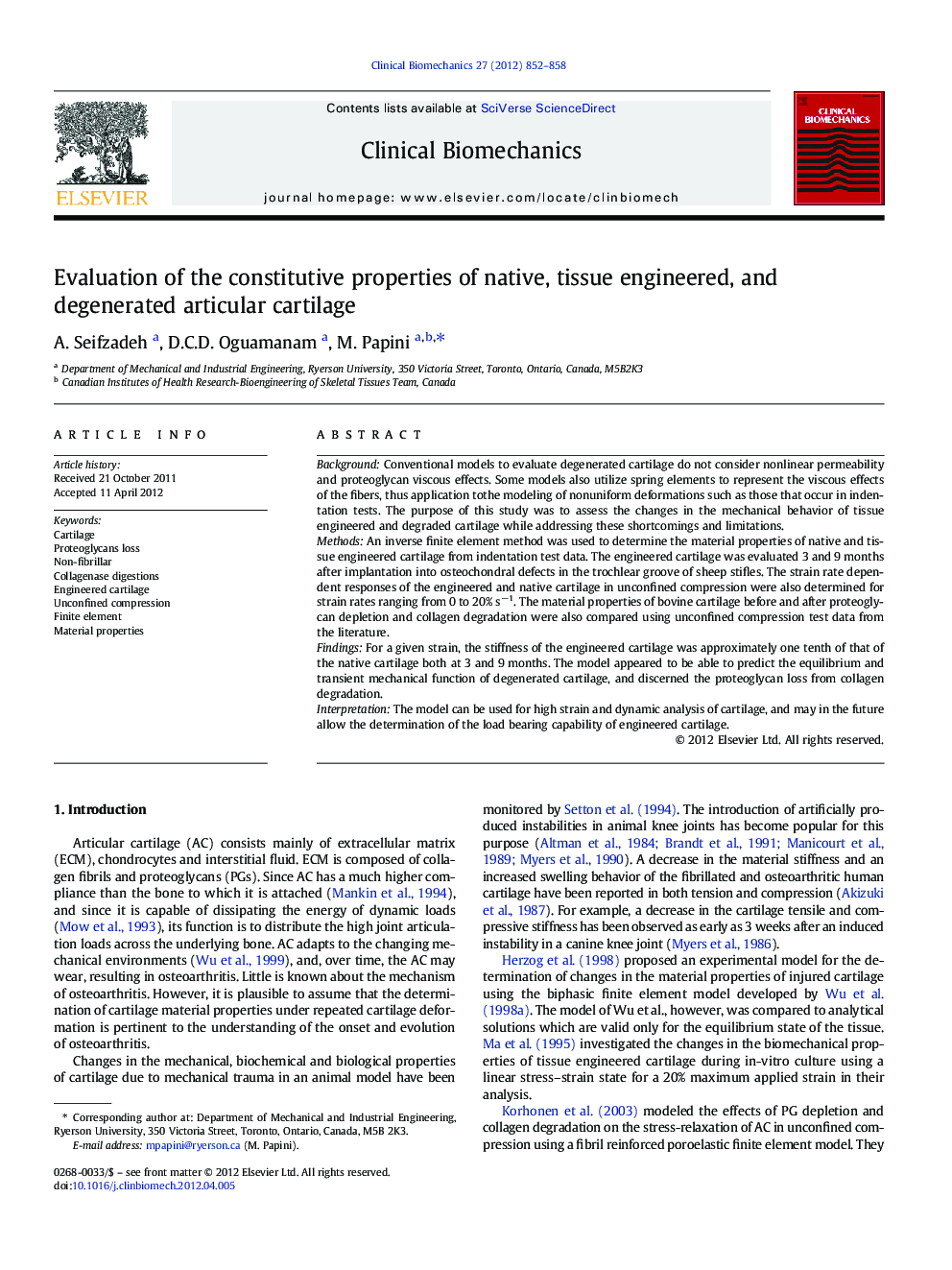| Article ID | Journal | Published Year | Pages | File Type |
|---|---|---|---|---|
| 6205179 | Clinical Biomechanics | 2012 | 7 Pages |
BackgroundConventional models to evaluate degenerated cartilage do not consider nonlinear permeability and proteoglycan viscous effects. Some models also utilize spring elements to represent the viscous effects of the fibers, thus application tothe modeling of nonuniform deformations such as those that occur in indentation tests. The purpose of this study was to assess the changes in the mechanical behavior of tissue engineered and degraded cartilage while addressing these shortcomings and limitations.MethodsAn inverse finite element method was used to determine the material properties of native and tissue engineered cartilage from indentation test data. The engineered cartilage was evaluated 3 and 9Â months after implantation into osteochondral defects in the trochlear groove of sheep stifles. The strain rate dependent responses of the engineered and native cartilage in unconfined compression were also determined for strain rates ranging from 0 to 20%Â sâ1. The material properties of bovine cartilage before and after proteoglycan depletion and collagen degradation were also compared using unconfined compression test data from the literature.FindingsFor a given strain, the stiffness of the engineered cartilage was approximately one tenth of that of the native cartilage both at 3 and 9Â months. The model appeared to be able to predict the equilibrium and transient mechanical function of degenerated cartilage, and discerned the proteoglycan loss from collagen degradation.InterpretationThe model can be used for high strain and dynamic analysis of cartilage, and may in the future allow the determination of the load bearing capability of engineered cartilage.
